Don’t be a bogan: 11 ways to be a better tourist in Bali
By Penny Watson
The so-called Island of the Gods has long been a magnet for laid-back hedonistic tourism, a place where letting your hair down is key to the tropical island escapist zeitgeist. For most visitors, that means a few extra cocktails, a massage on the beach or perhaps a late night or two.
But as the headlines have so readily and recently reminded us, more serious offences – drunkenness, public nudity, drug trafficking – are rife. Indeed, deportations and, in some cases, imprisonment, have been the result.
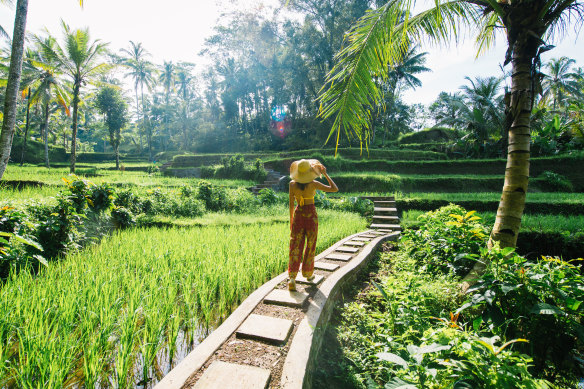
What is it really like to be a good tourist in Bali?Credit: iStock
In more recent years, as the Bali vibe shifts from being a cheap backpacker haven to a luxury resort destination and wellness hub, the provincial government has at various times publicly stated its desire to attract a higher calibre of tourist. But words have spoken louder than action.
Since Bali opened back up to the world post-pandemic, an influx of visitors has seen many long-held rules and regulations thrown out the window.
Traffic violations, visa infringements, and drunken behaviour have been common, but the real bugbear among the mostly Hindu Balinese community is the increasingly commonplace disrespect shown to local culture – naked selfies at sacred sites being just one example.

Bali’s vibe has shifted from backpacker party island to wellness hub.Credit: iStock
In response, Bali Governor Wayan Koster has called variously on the Indonesian government to end visas on arrival for some trouble-making nations, charge tourism taxes, ban scooter rentals, and, most recently, keep Bali’s sacred mountains off limits to tourists.
Meanwhile, the government is also appealing to good sense with plans to publish a guide to “being a good tourist”. The booklet, to be available in five languages, will be similar to one now being handed out at Bali’s Ngurah Rai International Airport, which lists “dos and don’ts” for visitors, including tips on driving in Indonesia, local culture and customs, and how to dress and behave.
While the booklet and new regulations are yet to see the light of day, the recent push for better tourism – and tourists – has served to elevate the island’s many cultural, sustainable and altruistic experiences, the kind that tap into the true heart of Bali as a destination.
But what is it really like to be a good tourist in Bali, to do good there and, yes, still have a good time?
Below, Traveller, and the Balinese themselves, offer some ideas, ranging from helping to revive traditional textiles at workshops using plant-based dying techniques, to kayaking through a mangrove while collecting litter – a huge problem in Bali – as you go.
Jungle by the book: sleep in a bamboo treehouse
Ever dreamed of old Bali, of swimming in natural pools, splashing under waterfalls and falling asleep to the sounds of the jungle?
Bambu Indah resort in Sayan, near Ubud, is the culmination of a lifelong devotion to sustainability, regeneration and deep appreciation of Balinese culture by jewellery designer John Hardy and his wife, Cynthia. Here you can stay in a range of accommodation that is beyond extraordinary.
Spread around the untouched tropical jungle is a fairytale bamboo treehouse strung between two banyan trees, a collection of antique Javanese cottages, a three-storey riverfront bamboo house, and canvas-topped rooms sitting on bamboo platforms overlooking the coconut canopy. Day visits are also encouraged.
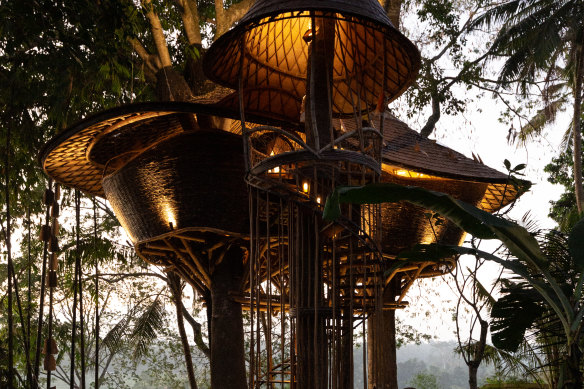
Bambu Indah resort in Sayan offers extraordinary treehouse-style accommodations.
Guests can dine at the glorious copper-roofed riverside warung, which serves simple locally grown sustainable Balinese food, and spend the day among the waterfalls and natural swimming holes. See bambuindah.com
Beyond beaches and booze: eco-trekking, walking and cycling
Bali Eco Tours has been promoting “good tourism” in Bali since 1999, when the Ubud-based company saw a gap in the market for tourist activities that were less about beaches and booze, more about Balinese culture and the island’s enigmatic natural world.
They wanted visitors “to get a feel for the magic and spirit of this stunning island”. To that end, the company now offers a gamut of activities and tours in diverse locations, from rice field treks in Ubud and downhill cycling in East Bali to canoeing at Lake Tamblingan and “lava and ash” walks at Mount Batur, an active volcano at the island’s centre.
Each tour is interwoven with opportunities to go local, such as warung-style lunches and visits to Balinese village homes.
They’re also well-versed in necessary holiday luxuries with post-trek massages and hot spring visits included on the varied itineraries. See balieco.co.id and baliecocycling.com
All together now: experience authentic village life
Balinese village life is untapped in terms of the island’s tourism, something that the Togetherness Project hopes to change. The grassroots organisation’s community-based village tours connect curious travellers with the Balinese on a deeper level through sharing spiritual, cultural and practical day-to-day life activities.
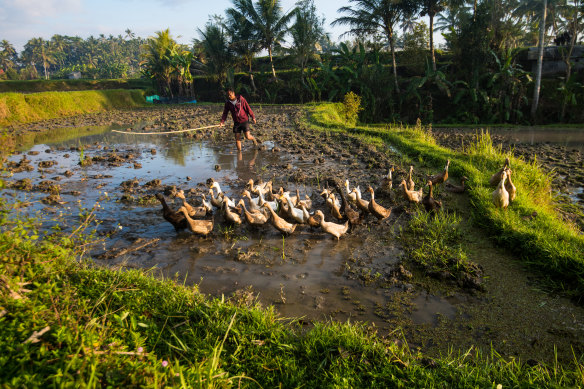
The Togetherness Project offers a glimpse of traditional farming practices and village life.
The Pesalakan Cultural Village tour is one example. The village, on the banks of the holy Pakerisan River, is home to about 770 people. Guided by village leader Made Astawa, visitors begin the day exploring the surrounding rice paddies before joining Made’s family for coffee in his traditional compound house.
Afterwards, a walk through the village reveals anecdotal stories about Balinese architecture, homelife, ikat weaving (Pesalakan village’s craft specialty) and the rituals around temple offerings and blessing ceremonies. The tour ends with a home-cooked Balinese lunch. See togethernessproject.net
What makes Bali batik
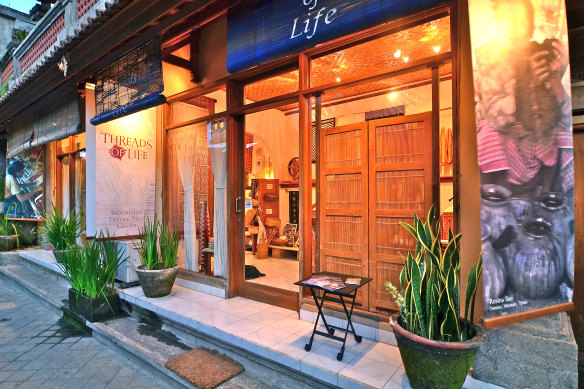
Threads of Life offer workshops exploring Indonesia’s ancestral textile traditions in an artisanal natural dye studio.
Indonesia’s enigmatic but endangered textile traditions are being revived and celebrated at Threads of Life in Ubud.
This shop, gallery and work studio supports and encourages more than 1000 women in communities across 12 Indonesian islands to help maintain ancient skills, techniques and local weaving and natural dying practices.
Marvel at the quality of work on display or buy exquisite keepsakes with links to heart-felt stories from across the archipelago. Another option is to create your own memories at half-day batik classes and immersive two- to five-day textile workshops.
Through batik making, participants delve into the ancient tradition of batik maling – using canting (drawing pen) and cap (stamps) to create unique designs on cotton.
In the process, you’ll gain an insight into age-old conservation techniques that harness the use of dyes made from plants in the garden such as natural indigo blue, woodfordia brown, jackwood yellow, and mud black and grey. See threadsoflife.com
Grain coming: learn all about Bali’s ancient staple
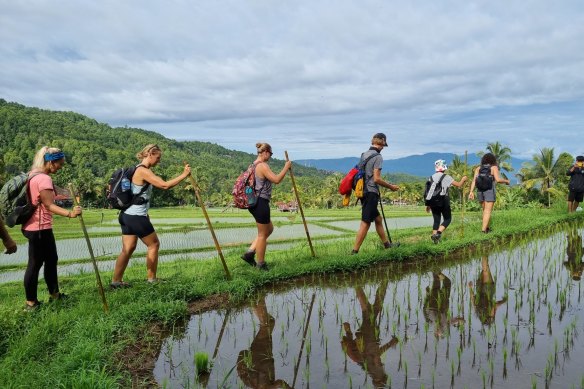
Astungkara Way offers interactive tourism experiences teaching about rice’s natural life cycle.
Bali’s regenerative rice-growing families are part of a small movement keen to return the island’s glorious green rice terraces and fields to a more natural, fertiliser-free state.
Social enterprise Astungkara Way has found a way to further support these families through interactive tourism experiences.
At the group’s 87-hectare rice farming co-operative near Sibang, visitors can sign up for a hands-on afternoon where they can learn about the natural rice cycle (including, depending on timing, how to plough with a cow), or treat themselves or their family to a micro-adventure, including a night sleeping under mosquito nets in a breezy bamboo pavilion.
Better still, Astungkara has founded the 135-kilometre Coast to Coast regenerative walk, a 10-day pilgrimage from Bali’s southern coastline over volcanic terrain to the north coast.
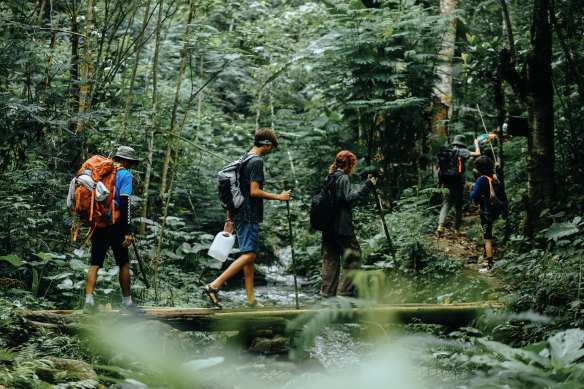
Astungkara runs a 10-day 135-kilometre regenerative walk taking in some spectacular scenery.
Guests stop at temples, waterfalls and other intriguing sights along the route, and are privy to some of Bali’s most beautiful landscapes.
You will be hosted in comfortable bamboo pavilions by rice-farming families who share their cultural stories, cooking skills and enthusiasm. Shorter two- and five-day journeys are also available. See astungkaraway.com
Go mangrove go: kayak and clean-up
Not far from Bali’s Ngurah Rai International Airport and Denpasar’s busiest road intersection, a slice of wilderness is slowly being revived and rewilded.
Under the auspices of local government and the stewardship of Bali’s Green School, Ekowisata Mangrove has slowly been cleared of decades of tidal plastic and litter so that animal habitats, birdlife (including migrating species from Australia) and marine environments can recover.
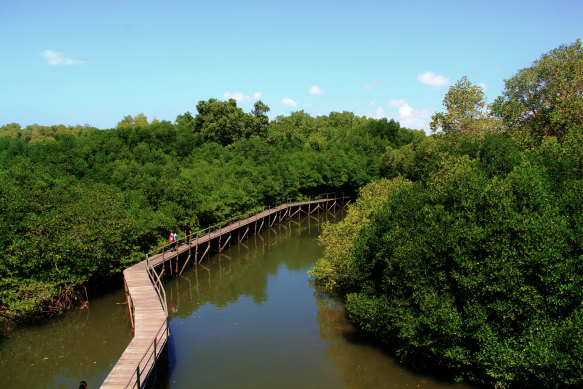
Tourists can now help rejuvenate Bali’s mangroves.Credit: iStock
The fishing and prawn farming trade ended here in recent years due to water toxicity. Local Wanasari families now play a part in protecting the environment and supporting the grassroots tourism economy.
Visitors can paddle in kayaks through the mangroves around a circular watery route (collecting rubbish as they go); follow lovely wooden boardwalks through the lush mangrove greenery; and climb an observation tower to see views towards distant Mount Agung. See wandernesia.com
Green school’s in: check out Bali’s bamboo campus
Half-way between Ubud and Canggu, on Green School Bali’s innovative “wall-less” bamboo campus, Green Camp hosts nature-based holiday camps for visiting children, families and groups.
The camps combine fun aspects of the school’s sustainability curriculum (think climbing coconut trees and mud-play) with Balinese culture.
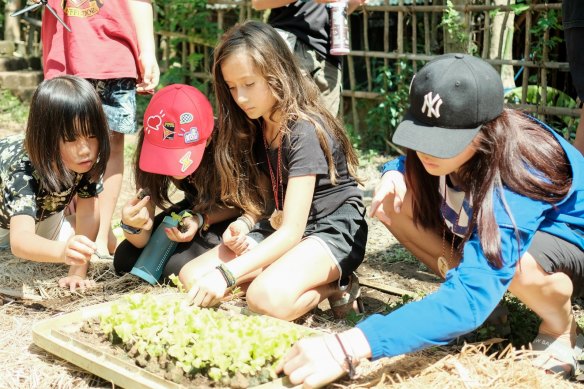
Bali’s Green Camp aims to equip children with a deeper understanding of the natural world.
They aim to equip participants with a deeper understanding of the natural world and a love for the planet that translates to action on the ground when participants return home.
Camps for kids have “junior naturalist” and “mini-changemaker” themes while young adults can sign up for a six-day nature documentary-making or four-day “MasterChefs” camp.
Families on a three-day “green adventure” sleep in jungle-immersed bamboo yurts and participate in bamboo raft-building on the nearby Ayung River.
There’s also kite making, organic gardening, laughing yoga and, like camps the world over, story-telling around a campfire. See greencampbali.com
Hatch a plan: help save Bali’s endangered animals
Plenty of resorts in Bali release turtle hatchlings on their beaches, but for Bali Conservation Adventures, that’s not enough.
With just one in 1000 hatchlings surviving to adulthood, the volunteer organisation’s founders, Renee Muliani and Bayu Yustitia, who share a background in hospitality, believe education is key to the plight of Bali’s turtles.
They started the volunteer organisation in 2020 with the aim of ensuring tourists come away from the experience not just with selfies, but with answers: why are these animals/habitats endangered? Who and what has caused it? And how can we help?
BCA offers five half-day hands-on conservation experiences including sea turtle releases, coral habitat restoration and tracking Bali’s beautiful but endangered starlings.
Another option, the Bali dogs experience, delves into Bali’s much-misunderstood heritage canines.
This ancient breed from Bali’s Kintamani highlands, is said to be related to – and older than – the Australian dingo, and is at risk of disappearing through interbreeding with introduced foreign species. BCA wants to see the species revived and respected. See baliconservationadventures.com
Go with the flow: become a river warrior
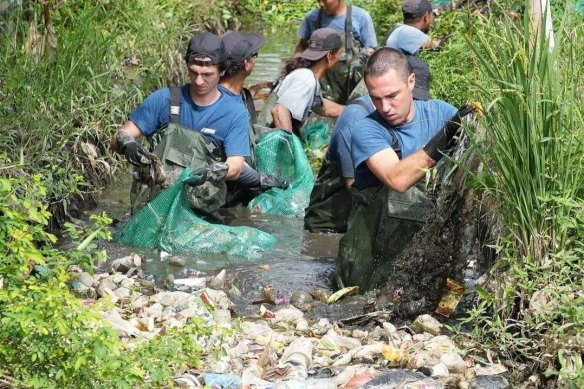
Indonesian NGO Sungai Watch cleans up rivers in Bali.
Sungai Watch is the darling of Bali’s conservation community. The river-cleaning environmental organisation started in 2020 with the founders’ – siblings Gary, Kelly and Sam Bencheghib – mission to stem the flow of plastic into Indonesia’s oceans.
To date, Sungai (meaning river in Bahasa Indonesian) has collected close to 1.3 million kilograms of plastic from litter barriers in 180 rivers and 32 villages across four Indonesian regions.
The collected trash is meticulously sorted at Sungai’s up-cycling facility where a scalable approach enables re-purposing of materials to support other industries.
The company’s 90 “river warriors”, known to don overalls and get chest-deep in some of Bali’s muckiest waterways, are aided by volunteers at weekly river and mangrove clean-ups across the island. Visitors to Bali can sign up. See sungai.watch
Join the biosphere of influence: save marine and land habitats
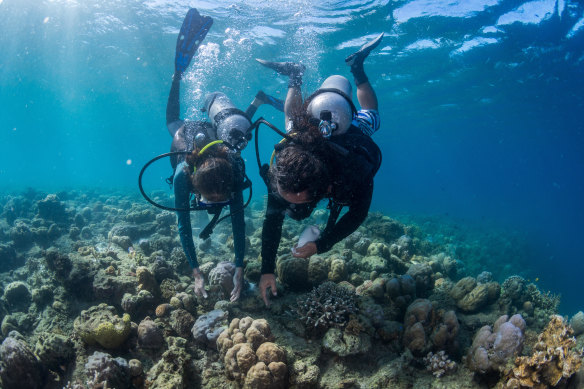
The Biosphere Foundation runs programs to restore forests, regenerate watersheds, and steward coral reefs.
Somewhat remarkably, Abagail Alling and Mark Van Thillo, the founders of Biosphere Foundation in northwest Bali, were two of eight “biospherians” who lived inside the famed Biosphere 2 project in the US for two whole years.
The incredible experience was the inspiration for the foundation and its role in protecting marine environments and land habitats in this remote region of Bali.
Families and groups can book stays at the centre’s simple, comfortable and sustainable accommodation in the hills of Pejarakan Village near Bali Barat National Park, and customise their stay around activities that pair holiday fun with environmental stewardship: hike through the national park and see the endangered Bali starling sanctuary and snorkel around Menjangan Island to learn about coral reef ecology in the national park.
Dial it up a notch aboard the foundation’s traditional bugis sailing vessel, which ventures around conservation projects in the Coral Triangle. See biospherefoundation.org
Wet, wet, wet: visit a theme park with a conscience
Believe it or not, Bali’s Waterbom, a fun park featuring 22 wet and wild slides, is one of the companies leading the way on water conservation practices in Bali.
A behind-the-scenes tour with sustainability manager Surya Sastra Windu reveals that the park’s innovative water recycling system – combining constant water flow (through the park’s Lazy River, a tube-float around a circular waterway), an in-house filtration system and low-level chlorine – ensures the water quality remains consistently higher than government recommendations.
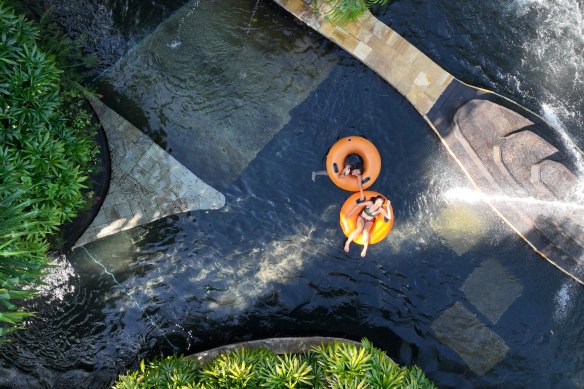
Bali’s iconic Waterbom park is leading the way with sustainable practises.
Other investments in conservation practices include bio-pores – a system that sees run-off rainwater harvested and returned directly to Bali’s receding underground water table; solar panels on all practical roof surfaces; and a data-driven recycling plantation that sees 100 per cent of kitchen and garden waste processed for recycling and composting.
For visitors (80 per cent of whom are Australian) the proof lies in the tropical surroundings, with 60 per cent of the park given over to green space.
This sustainability theme will continue this year when the park expands by 1.3 hectares to include a winding 20-metre slide tower with viewing platform. See waterbom-bali.com
Dos and don’ts for visiting Bali
Don’t presume Balinese people won’t appreciate your minimal Balinese or bahasa Indonesian – attempting conversation is a cultural connection and much appreciated.
Do Honour and respect Bali’s Hindu belief system in all its forms including the sanctity of its sacred sites, be they banyan trees, rivers and mountains or temples, canung (blessing basket) and mangku (priests). Dress appropriately and refrain from taking inappropriate selfies.
Don’t drink to excess, take drugs, or engage in similarly risky behaviour. Keep noise levels down and respect the local environment by not relieving yourself near temples and public places (it happens).
Do participate in blessing ceremonies, prayers and rituals. Make the most of the experience by wearing traditional Balinese dress and asking questions about the experience. Being interested in local mores, traditions, arts, culture, and the intrinsic wisdom of the Balinese people will ensure a more rounded and intimate Bali experience.
Don’t wear skimpy clothing or swimwear anywhere other than at the beach or by a pool. It’s not a good look on a motorbike either.
Do tip if somebody has genuinely made your day, especially those in lower-paid and menial trades or jobs. Don’t barter too seriously at markets, it is supposed to be a friendly exchange.
Don’t drive like a loon or while affected by drugs or alcohol. Follow road rules, wear your helmet, dress appropriately, don’t overload your bike with passengers, carry your international driver’s licence and be appropriately insured.
Do smile when you enter a restaurant, warung, spa, temple or market. Be courteous and respectful. You’re on holiday!
Don’t participate in activities contrary to animal wellbeing, including elephant riding and bathing and swimming with dolphins in artificial pools. Touching turtles and other animals in captivity and posting a selfie of the experience is a no-no. Instead, support conservation initiatives that are championing the island’s endangered species and habitats.
Do pick up and read a “Do’s and Don’ts” pamphlet at the airport on arrival and keep an eye out for the government’s soon-to-be released guide for the low-down on being a better Bali visitor.
Sign up for the Traveller Deals newsletter
Get exclusive travel deals delivered straight to your inbox. Sign up now.